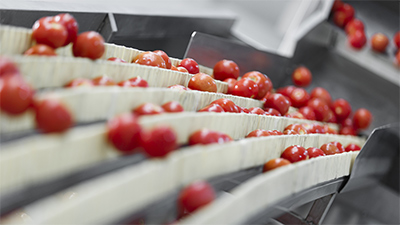Changing consumer tastes and preferences have rocked the food and beverage industry in recent years. Not only are consumers seeking healthier and more affordable options, but they also expect the convenience provided by impressive distribution networks. These evolving expectations are putting pressure on the industry to adapt to an ever-changing consumer, which is forcing food and beverage (F&B) companies to seek funding to fuel industry innovation.
Today’s consumer evaluates and shops for products in a much different way than consumers did 20,10, or even five years ago. More emphasis is put on healthier, fresher food with less processed ingredients, at an affordable price. The most successful food and beverage companies will be the ones that are adaptable in an evolving industry, are proactively investing in innovations that meet changing expectations, and support investments in the supply chain.
As a historically reactive industry, companies with a financial strategy addressing challenges that accompany change will triumph, regarding both innovation and financial performance.
In an industry that is fast-paced and ultimately determined by current consumer preferences, having a predictive model and the financial flexibility to pivot when directions change is key to remaining competitive. While there are several ways to finance these initiatives, from increasing debt to selling assets, supply chain finance is the most efficient and sustainable. The leading F&B companies need an option that is scalable and offers long-term solutions to keep up with tomorrow’s trends.
F&B companies can appeal to a transforming audience by investing in:
Healthier and less processed offerings. As consumers become more interested in healthier options, food and beverage companies — specifically, frozen food and packaged food companies — should focus on freshening up and repositioning product lines. F&B companies are rolling out new products that appeal to the more health-conscious consumer, and brands like Nestle’s Lean Cuisine and Conagra’s Healthy Choice are re-evaluating and repackaging their frozen meals with more protein, whole foods, less sodium and less added sugar.
More affordable options. Discount retailers have taken a strong foothold in the grocery industry, in part due to the increasing popularity of private-label brands. According to Daymon’s 2018 Private-Brand Intelligence Report, 61 percent of consumers say they are buying more private-label brands than two years ago, and more than half say they shop at a store specifically for its private label. For this reason, an investment in the development and production of private labels would be a smart move for food retailers moving forward. Furthermore, the increased interest in discount retailers has also driven growth and expansion. Aldi, for example, is planning to open 800 new stores in the U.S., positioning it to be the third-largest grocer behind Walmart and Kroger.
Expanded distribution networks. Since Amazon’s acquisition of Whole Foods, the pressure for food retailers to compete with the mogul’s impressive distribution network is at an all-time high. Retailers are looking to expand their portfolios to include non-food offerings and are investing in partnerships with established distribution








